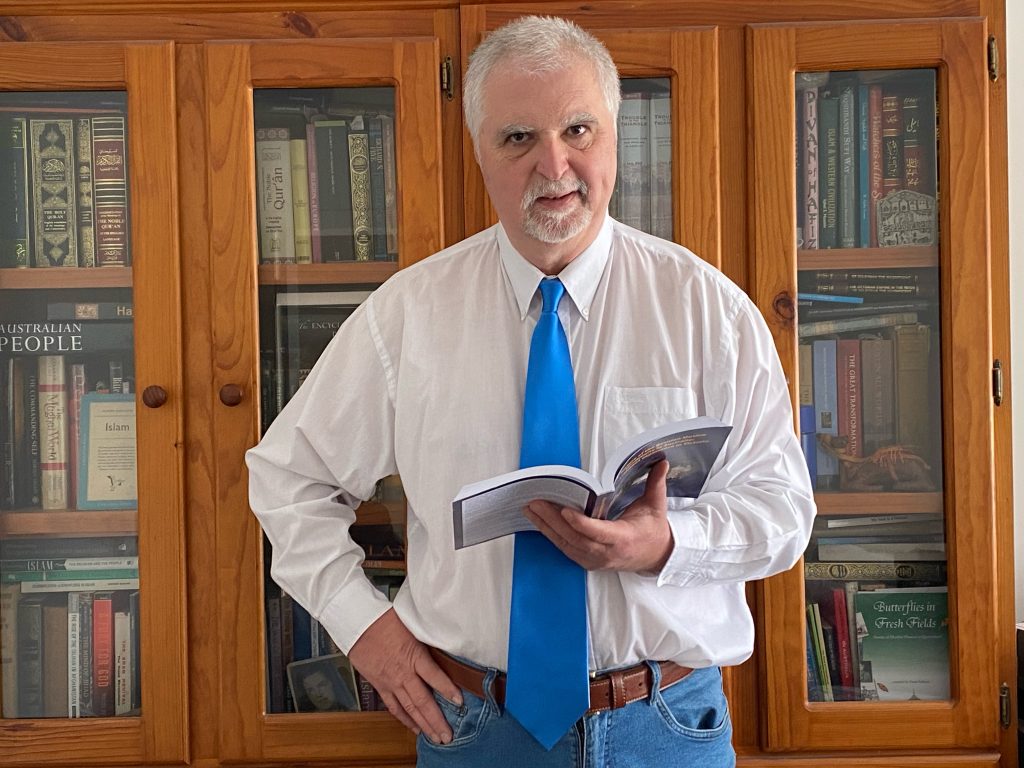
Dr Dzavid Haveric, a well-respected historian, is an Adjunct Research Fellow at the Centre for Islamic Studies and Civilisation and a member of the Public and Contextual Theology Research Centre at Charles Sturt University. He is also a Research Associate at the Victoria Museum. Dr Haveric worked as Program Assistant at the Parliament of the World’s Religions within the Victorian Multicultural Commission. He was a Research Assistant at Victoria University. He was made a member of the distinguished Bosnian Academy of Science and Art (BANUK), Sarajevo, in recognition for his history work. He also worked as a Reporter for SBS Radio for the Bosnian community and as a Journalist for Bosnian community newspapers. Dr Haveric is the author of twelve books, mostly related to Muslims in Australia.
Dr Haveric’s background is Bosnian Muslim and his name can be pronounced as Javid (Bosnian spelling: Dzavid). Haveric is an old and distinguished Muslim family in Bosnia and Dzavid is its 14th generation. The Haveric family was very large and some family members also lived in Albania, Montenegro and Turkey. During the time of the Ottoman Empire several ancestors of the Haveric family had high positions as pashas (dignitaries, army generals). A number of them were dervishes, Sufis, calligraphers, Imams, scholars, and artists. Still others were also ceremonial guards for the King of Montenegro. One Haveric served as a secretary in the King’s palace in Cairo, Egypt. Among the Haveric’s ancestry there was one Islamic scholar, Sufi, translator and calligrapher who lived and worked in Albania. He was a Shaikh of the Sufi Tidjaniyah order and he was among a few co-translators of the holy Qur’an from Arabic to Albanian. Presumably, it was the first contemporary translation of the holy Qur’an by a Muslim in any European language. In the mid-18th century, there was a Haveric, a wakif (benefactor) in Montenegro for Muslim and non-Muslim residents. He established an aqueduct and fountains and also wakuf (an endowment) for the maintenance of it. His wakuf also included 926 olive trees. Dzavid’s uncle was among the first leaders during WW2 to defend the city of Sarajevo, Bosnia. He participated in the national liberation and became known as the national hero of the city of Sarajevo. He is known for his promotion and support for the multi-ethnic and multi-faith society of Bosnia. A couple of Haverics held positions in the local government of Bosnia, and one in the state ministry. Following the war against Bosnia many family members took refuge in Western societies.
Among those who have read Dr Haveric’s Muslims making Australia home found it as a highly acclaimed contemporary reference.
Previously, there was a gap in the history of Muslim migration and multi-ethnic community building after WW2. The book includes arrivals of post-war Muslim migrants from the 1940s and 1960s. They came from Europe, the Middle East and Asia. Due to their small numbers, they jointly established multi-ethnic Muslim communities and various multi-ethnic organisations such as the Australian Federation of Islamic Societies. Every post-war multi-ethnic Muslim community in each state and territory was explored and documented in detail. It reveals immigration and cooperation in building multi-ethnic communities between different ethnic groups such as Lebanese, Turkish, Bosnian, Indian, Pakistani, Malayan, Indonesian, Iranian and many others. These communities proceeded to form ethnic communities, which grew up in the 1970s and 1980s. I argue that there is no history of Islam in Australia without a history of the Muslim communities; there is no history of these Muslim communities without the memories of Australian Muslims. Therefore, I incorporated in it many valuable memories of Muslims of different ethnicities, after a number of field trips across the nation.
Some readers found the book History of Islam and Muslims in Australia as a “gold mine” of historical data through pre-colonial and colonial times.
The themes of the book are the earliest appearance of Islam in Australia, interaction with Aboriginals, Muslim convicts, Afghan and Malay settlements, old mosques, Muslim festivals, travels for pilgrimages to Mecca and other topics until the period of World War II after which the history of Islam across the Commonwealth unfolded in rich multi-ethnicity manifested by diverse Muslim ethnic groups. The book is a detailed historical account of Islam and Muslims in Australia, free from stereotypes. It portrays a more realistic image of Islam and Muslims in Australia and thereby cultivates a positive appreciation of Australian Muslims’ distinctiveness. An important feature of Australian Muslims, revealed in the book, is the extent to which their religion helped them in expressing their loyalty to Australia.
What is your most recent project?
That project is related to Australian Muslims serving in Australian Defence Force. For last several years I worked on this research and writing, and also undertook field trips to many institutions and communities in different places in Australia. A range of data will show how Australian Muslim service personnel demonstrated their loyalty, patriotism and contribution to Australia. When it is published, through its multicultural lens, it will document how Muslim soldiers’ stories are inextricably interwoven with Australia’s history. There will be more about this great book project, hopefully, in the forthcoming time. It is the first ever project written on Muslims of different ethnic backgrounds in Australian Defence Force.
Your current project is a Monography of the Australian Bosnian Islamic Centre, Deer Park, right?
Yes. The Monography is related to the historical development of the ABIC Deer Park, from its founding in mid-1970s in Footscray. The project is going towards its 50th anniversary. It will be rich in images and wording, which highlight community cultural-religious activities. It will demonstrate a distinctive Bosnian Muslim ethnic footprint as an integral part of multi-ethnic and multicultural Australia.
